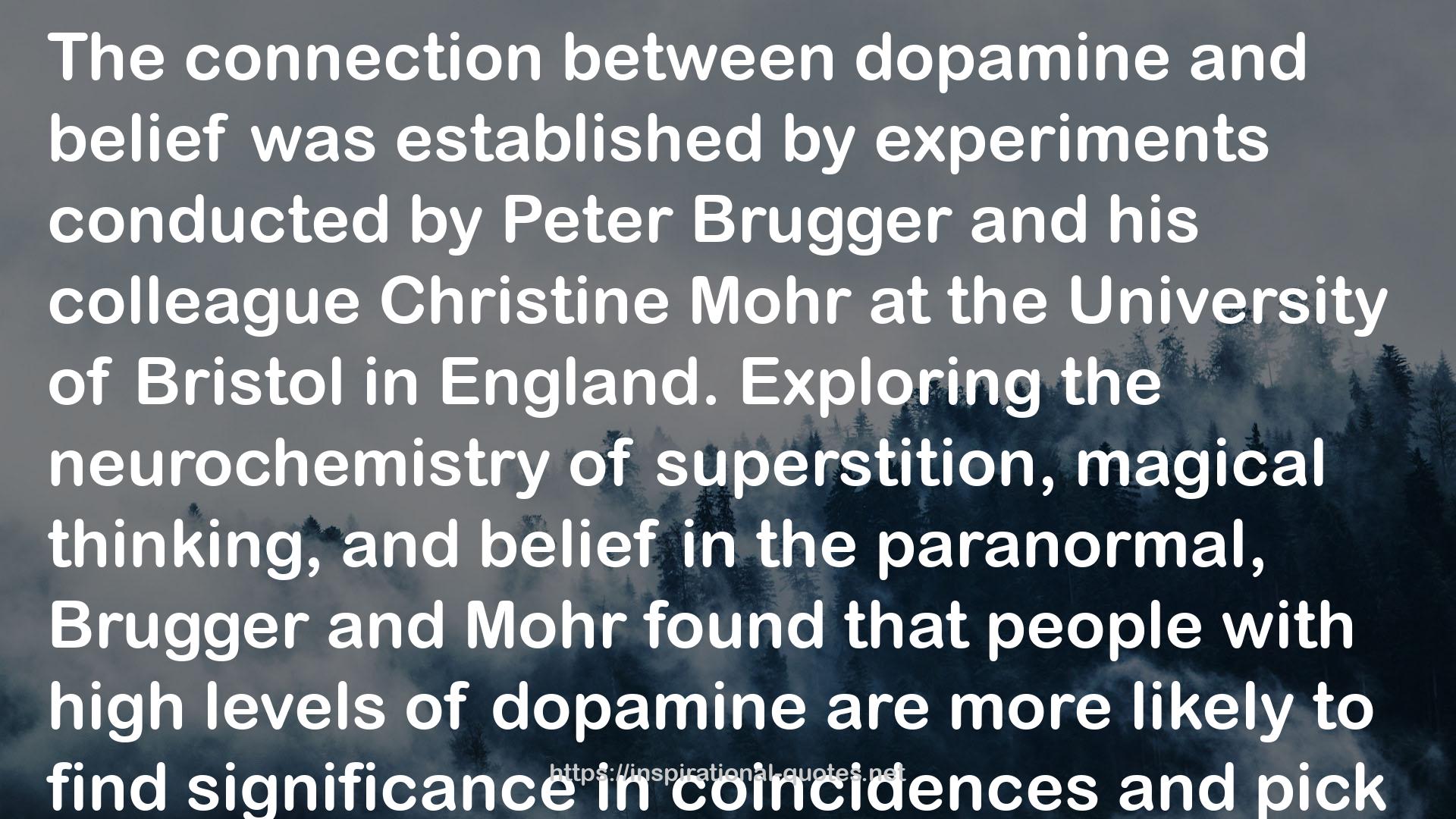" The connection between dopamine and belief was established by experiments conducted by Peter Brugger and his colleague Christine Mohr at the University of Bristol in England. Exploring the neurochemistry of superstition, magical thinking, and belief in the paranormal, Brugger and Mohr found that people with high levels of dopamine are more likely to find significance in coincidences and pick out meaning and patterns where there are none. In one study, for example, they compared twenty self-professed believers in ghosts, gods, spirits, and conspiracies to twenty self-professed skeptics of such claims. They showed all subjects a series of slides consisting of people’s faces, some of which were normal while others had their parts scrambled, such as swapping out eyes or ears or noses from different faces. In another experiment, real and scrambled words were flashed. In general, the scientists found that the believers were much more likely than the skeptics to mistakenly assess a scrambled face as real, and to read a scrambled word as normal.
In the second part of the experiment, Brugger and Mohr gave all forty subjects L-dopa, the drug used for Parkinson’s disease patients that increases the levels of dopamine in the brain. They then repeated the slide show with the scrambled or real faces and words. The boost of dopamine caused both believers and skeptics to identify scrambled faces and real and jumbled words as normal. This suggests that patternicity may be associated with high levels of dopamine in the brain. Intriguingly, the effect of L-dopa was stronger on skeptics than believers. That is, increased levels of dopamine appear to be more effective in making skeptics less skeptical than in making believers more believing.8 Why? Two possibilities come to mind: (1) perhaps the dopamine levels of believers are already higher than those of skeptics and so the latter will feel the effects of the drug more; or (2) perhaps the patternicity proclivity of believers is already so high that the effects of the dopamine are lower than those of skeptics. Additional research shows that people who profess belief in the paranormal—compared to skeptics—show a greater tendency to perceive “patterns in noise,”9 and are more inclined to attribute meaning to random connections they believe exist. "
― Michael Shermer , The Believing Brain: From Ghosts and Gods to Politics and Conspiracies How We Construct Beliefs and Reinforce Them as Truths
